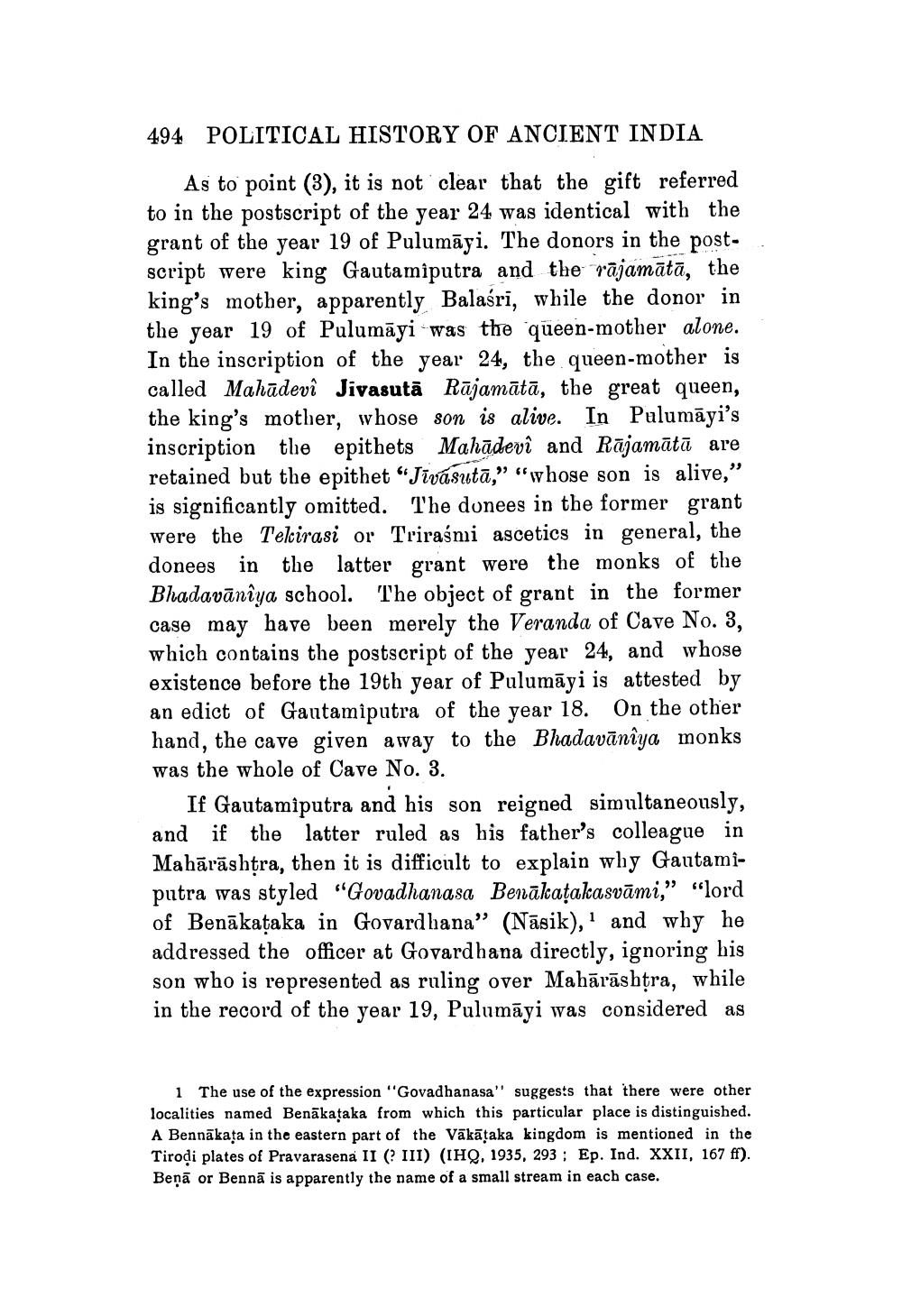________________
494 POLITICAL HISTORY OF ANCIENT INDIA
As to point (3), it is not clear that the gift referred to in the postscript of the year 24 was identical with the grant of the year 19 of Pulumāyi. The donors in the postscript were king Gautamiputra and the rājamātā, the king's mother, apparently Balasri, while the donor in the year 19 of Pulumāyi was the queen-mother alone. In the inscription of the year 24, the queen-mother is called Mahādevî Jivasutā Rājamātā, the great queen, the king's mother, whose son is alive. In Pulumāyi's inscription the epithets Mahadevî and Rājamātā are retained but the epithet "Jivasutā,” “whose son is alive,” is significantly omitted. The dunees in the former grant were the Tekirasi or Triraśmi ascetics in general, the donees in the latter grant were the monks of the Bhadavānîya school. The object of grant in the former case may have been merely the Veranda of Cave No. 3, which contains the postscript of the year 24, and whose existence before the 19th year of Pulumāyi is attested by an edict of Gautamiputra of the year 18. On the other hand, the cave given away to the Bhadavānîya monks was the whole of Cave No. 3.
If Gautamiputra and his son reigned simultaneously, and if the latter ruled as his father's colleague in Mahārāshtra, then it is difficult to explain why Gautamîputra was styled "Govadhanasa Benākațakasvāmi," "lord of Benākataka in Govardhana" (Nāsik), and why he addressed the officer at Govardhana directly, ignoring his son who is represented as ruling over Mahārāshțra, while in the record of the year 19, Pulumāyi was considered as
1 The use of the expression "Govadhanasa" suggests that there were other localities named Benākataka from which this particular place is distinguished. A Bennākata in the eastern part of the Vākāțaka kingdom is mentioned in the Tirodi plates of Pravarasena II (? III) (IHQ, 1935, 293 ; Ep. Ind. XXII, 167 ff). Benā or Bennā is apparently the name of a small stream in each case.




